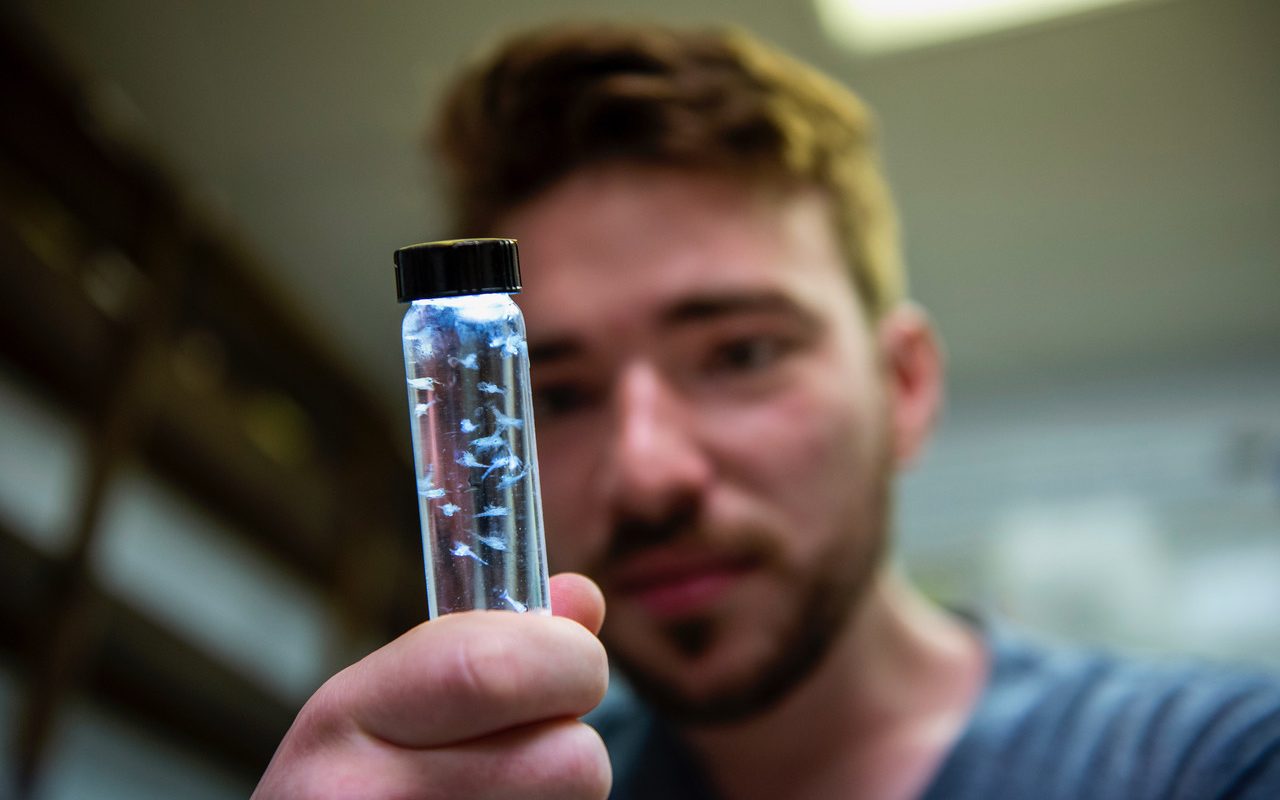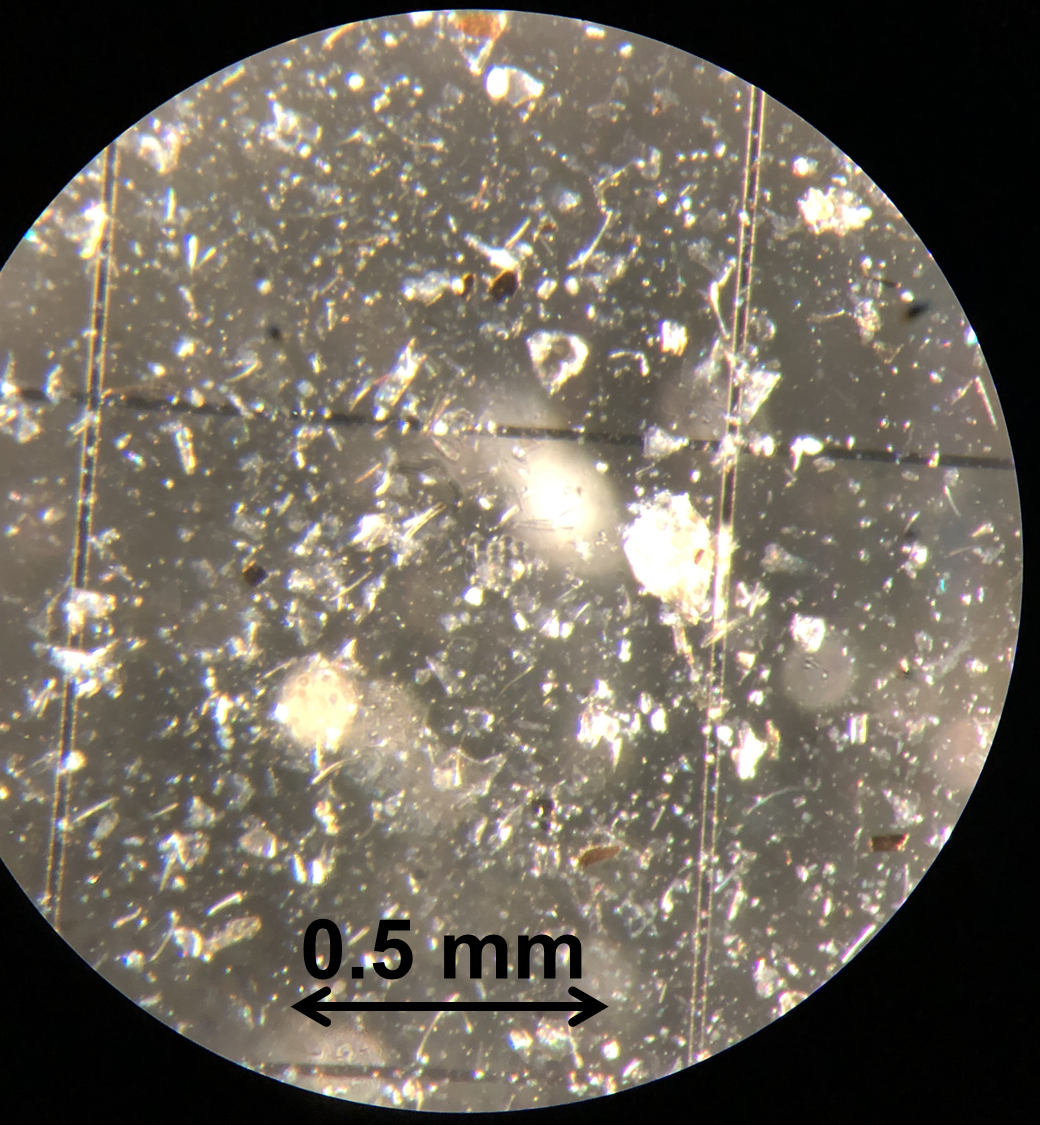
New methods complement old in revealing diet of larval lobsters
Editor’s note: This story was updated on July 1.
Researchers from the University of Maine and Bigelow Laboratory for Ocean Sciences have demonstrated a new approach to understanding the diet of newly hatched American lobsters, opening doors for better understanding the role they play in the Gulf of Maine’s ecosystem.
Scientists know little about what larval lobsters eat and how their diet benefits their survival. That’s primarily because these crustaceans are only about a quarter of an inch in length and their stomachs are about the size of a pinhead. That makes them no small challenge to examine under a microscope, the traditional method for conducting this type of research.

In a new study titled “Contemporary eDNA methods complement conventional microscopy in zooplankton diet studies: Case study with American lobster postlarvae,” published in the journal PLOS One, the team of scientists show how new techniques that leverage trace prey DNA along with traditional microscopy can lend greater insight into larval lobsters’ feeding habits, helping researchers determine whether the changing supply of planktonic prey in a warming ocean will hinder larval lobster’s ability to survive.
“Lobsters are an important economic and cultural resource. They’re also important ecologically as a large-bodied crustacean scavenger spending most of its life on the bottom of the Gulf of Maine,” said Alex Ascher, the publication’s lead author, a former UMaine Ph.D. student and a postdoctoral researcher at Quahog Bay Conservancy and Woods Hole Oceanographic Institution. “This means they are well studied, but there are still gaps when it comes to their early life history.”
To overcome the limitation in lobster diet research, the team used two molecular approaches to examine specimens.
The first is metabarcoding, an approach that uses a “universal” genetic marker to broadly identify prey present in the larval lobsters’ stomachs. It is also widely used in the study of environmental DNA. In this first-ever probe of newly-hatched lobster using metabarcoding, Ascher and research team not only confirmed some of the common broad prey categories observed by microscopy, most prominently crustaceans, but they also detected a strong signal from other prey that have soft body parts in their own early life stages, such as worms and fish eggs. They also found a wide diversity of single cell organisms in the diet such as microalgae and fungi, most of which were likely foods consumed by the animal prey.
But one of the challenges with this approach is that the lobster larva’s own DNA can overwhelm the signal from closely related prey in the diet, such as other species of crustacean. To counter this, the team developed a specialized blocker that was able to mask much of the lobster genetic material, revealing a diversity of organisms that could not be identified visually.
The next approach introduced was a primer-probe based Polymerase Chain Reaction (PCR) designed to target a particular prey species of interest with high-fidelity. In this case, the researchers were interested in knowing whether Calanus finmarchicus, a foundational crustacean prey species in zooplankton residing in northern waters, was consumed by larval lobsters. If a lobster has eaten Calanus, the primer and probe attach to the prey’s DNA and light up with fluorescence, just as in a PCR-based COVID-19 test. Based on early estimates, the team can now demonstrate for the first time that newly-hatched lobsters consume Calanus at a rate higher than would be expected, given the availability of other zooplankton prey in the wild.
“Now we have a bigger tool kit to understand the larval diet that not only takes advantage of visible evidence from traditional microscopy, but also capitalizes on two new molecular approaches that open a window on the invisible,” said Richard Wahle, a co-author of the study who previously directed UMaine’s Lobster Institute and was a professor with the School of Marine Sciences. “It will help us answer long standing questions about how larval lobsters interact with the planktonic food web.”
This work also serves as an important step in understanding a previously reported strong correlation between lobster year class strength and Calanus abundance. As a result, researchers suspect that the lobster population in the Gulf of Maine could be dependent on available prey during their critical early stages in the plankton.
“What are the important components of the larval lobster diet?” Ascher asked. “What are the prey that really sustain them, and are those prey likely to be more or less available to them in the future?”
The answers to these questions have real implications for Maine’s lobster industry, the ecosystems they inhabit and the coastal communities that rely on them.
Using these methods, the research team is preparing an upcoming publication more fully revealing the diet of early and late-stage larval lobsters in two locations of the Gulf of Maine.
This study was part of Ascher’s Ph.D. dissertation in collaboration with Bigelow Laboratory researchers Peter Countway, Robin Sleith and David Fields. Their work is a component of a larger multi-investigator effort to understand the feeding ecology of larval lobster in the planktonic food web through retrospective time series analysis, larval feeding studies and new environmental DNA approaches to diet analysis. The project is supported by Maine Department of Marine Resources, Maine Sea Grant and the National Science Foundation EPSCoR Track-1 Maine-eDNA research program.
Contact; Daniel Timmermann, daniel.timmermann@maine.edu

